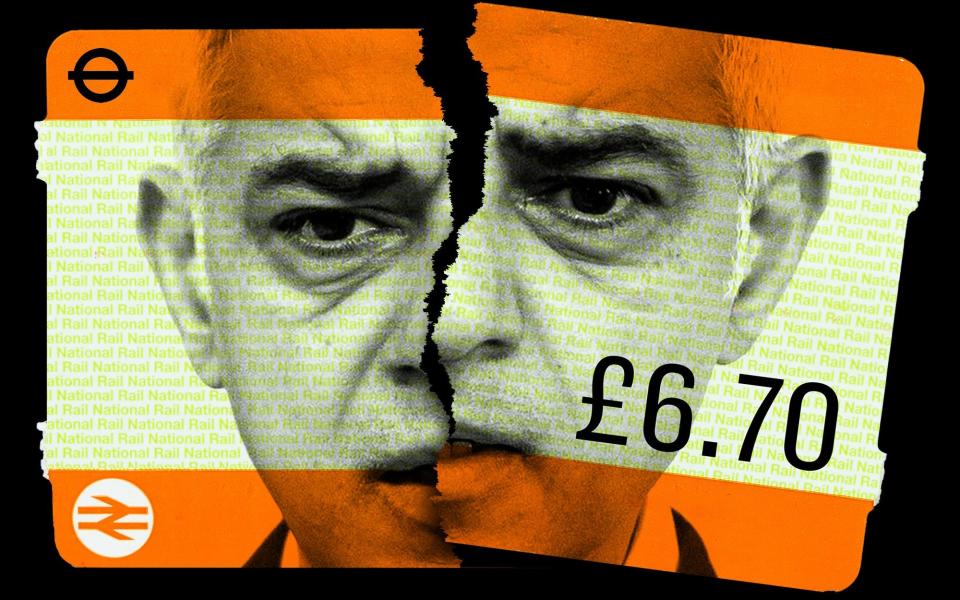Single Tube ticket rises to £6.70 under Sadiq Khan – double the price of contactless

The price of a cash ticket for a single Tube journey in central London has risen by 37pc under Sadiq Khan’s leadership, more than double the cost of commuting by card.
In 2016, when Mr Khan was first elected Mayor of London, a single journey cash ticket – meaning a paper ticket bought by cash or card – cost £4.90 in central London, but today the cost is £6.70. When paying with a contactless card or oyster card, the same zone one journey costs £2.80 at peak time and £2.70 off peak .
Prices for both contactless and card travel have been rising steadily over the past decade but in 2022 Mr Khan put in place a blanket price for all cash single tickets at £6.70 for all of London. It means that those paying by cash now pay double the amount paid by card users in the centre of the capital for a single journey both on and off peak.
Figures from Transport for London (TfL) show that around 66 million journeys a year – about 2pc of all journeys – are taken via single paper ticket. Buses in London haven’t accepted cash for 10 years, requiring travellers to buy a prepaid ticket or use a contactless form of payment.
Martin Quinn, of campaign group the Payment Choice Alliance, accused the Mayor of “forcing people to go cashless”.
He said: “The shocking disparity between cash tickets and pay-as-you-go fares shows the contempt that Transport for London and the Mayor have for Londoners and, let’s face it, tourists who may not have contactless cards and want to purchase tickets using cash. Why should they be penalised and forced to go cashless”.
Mr Khan has frozen all TfL prices until March 2025, in a move that he says will save Londoners up to £90 a year. Fares were previously frozen from 2016-2021, however funding reductions as a result of the Coronavirus pandemic meant they needed to rise again.
Prices for single ticket “cash” fares and Oyster pay-as-you-go fares have differed since 2003. Mr Khan introduced contactless bank card payments in 2014.
About 20pc of all journeys on the Tube network are not paid for using contactless options. This includes single tickets, travelcards, bus passes and Oyster pay-as-you-go top-ups.
Labour’s Mr Khan has served two terms as Mayor of London, arriving at City Hall in 2016. Londoners went to the polls on 2 May to elect a Mayor for the next four-year term and Greater London Assembly. The last Savanta survey for Centre for London ahead of the vote put Mr Khan on a 42pc share of the vote, ahead of Tory candidate Susan Hall on 32pc.
Mayors have legal powers to impose a levy, known as a “mayoral precept”, on the populations they serve. Londoners have seen a 71pc surge in “Sadiq’s stealth tax”. Families in London are currently charged an average of £471 per household, which is the highest figure in the country for this type of tax. The levy has increased from an average of £276 when Sadiq Khan took office.
A TfL spokesman said: “There has been a difference in the fare for single tickets (often called ‘cash’ fares) and pay-as-you-go with Oyster fares since 2003.
“The vast majority of customers on London Underground now use pay-as-you-go with contactless or Oyster, as this is a convenient way to travel. Single tickets are used for less than 2 per cent of all journeys, mostly from outside London, where they are priced differently, because they are often linked to National Rail fares.
“Alongside fare freezes in recent years, as well as a wide range of concessions available to pay-as-you-go customers, we continue to work to keep all fares as affordable as possible.”

 Yahoo Finance
Yahoo Finance 